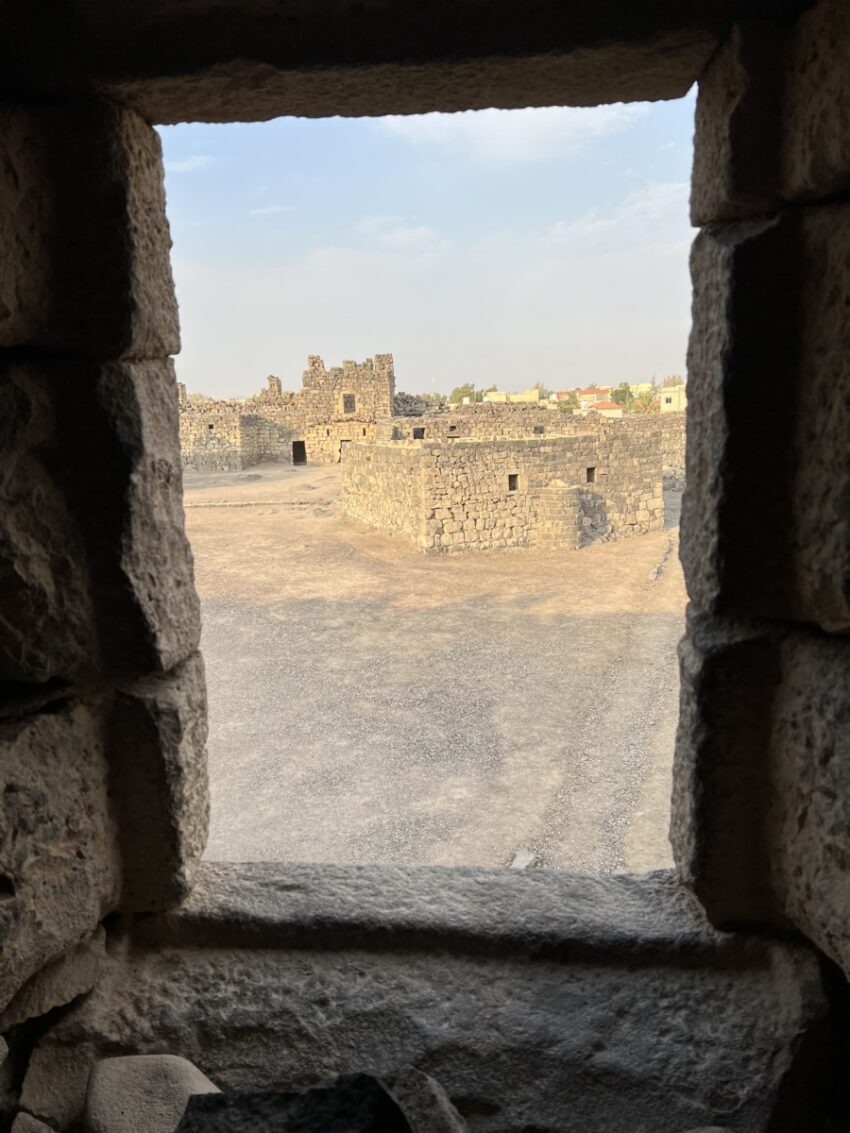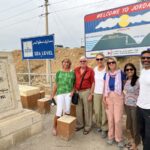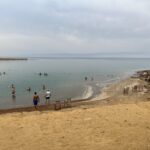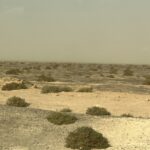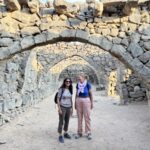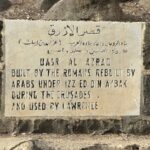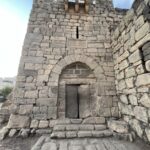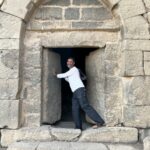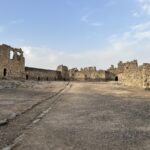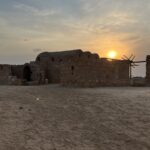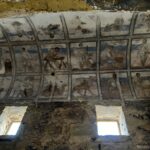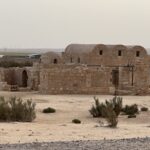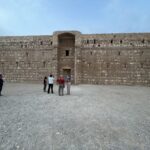The Dead Sea is a salt lake bordered by Jordan to the east and Palestine’s West Bank and Israel to the west. It lies in the Jordan Rift Valley, and its main tributary is the Jordan River. At 423 meters below sea level, the Dead Sea is officially the lowest place on earth. It spans 67 kilometers long and up to 18 kilometers wide along the Jordan Rift Valley. Unlike other lakes, the Dead Sea has no outlet, and intense evaporation leaves behind a rich, nourishing sediment of salts, mud and minerals. We floated in the water but after 15-20 minutes you need to get out as the salt can irritate your skin. We then had a quick mud bath and finished up relaxing around the pool at the hotel!
On to the Desert Castles. There have been important periods of time in the history of the region of the Desert Castles. One of these times was a period of about 100 years in the 7th and 8th centuries called the Umayyad Caliphate. (A ‘caliphate’ is the name given to an Islamic state, with its ruler called a ‘caliph’. Think of it being pretty much the same as an ’empire’ being ruled by an ’emperor’.) In about the year 750 AD, it stretched from Central Asia, through the Arabian Peninsula and North Africa, all the way into Spain and Portugal. That makes it the sixth-largest empire in history by size. At its peak, there were 33 million people who were part of the Umayyad Caliphate. That was about 15 per cent of the entire world’s population at the time. The capital of the Umayyad Caliphate was in Damascus, not far from this part of northern Jordan. Across the deserts here are the remains of what are usually called ‘castles’.
These desert castles of Jordan had different purposes. They were inns for traders to stop at for a rest, they were country estates for wealthy friends of the caliph, they were agricultural bases, or they were military bases.
The first castle we visited was the large black fortress of Qasr al-Azraq (The Blue Fortress). It is situated 13 kilometres north of the Azraq Junction, on the modern highway to Iraq. Azraq castle is one of desert castles with an ancient stone-walled fortress at the eastern part of the country. The castle is almost square, with 80-meter local black basalt long walls encircling a central courtyard. In the middle of the courtyard is a small mosque that may date from the Ayyubid period, along with the main well. At each corner of the outer wall, there is an oblong tower. The primary entrance is a single massive hinged slab of basalt, which leads to a vestibule where one can see carved into the pavement the remains of a board game. Above the entrance area is the chamber that was used by Lawrence of Arabia during his stay in Qasr al-Azraq. The caretaker of the castle has a collection of photographs of Lawrence; in fact, his father was one of the Arab officers who served with the legendary Brit.
Next desert castle, Qasr Amra, is possibly one of the best of Jordan’s desert castles. It is the only one that has been listed by UNESCO as a World Heritage Site. It’s what is inside that makes it such. It’s the paintings that are the most important part of Qasr Amra and the reason it has been recognised by UNESCO. They are one of the most important examples of early Islamic art – and they are out here in this small building in the middle of the empty Jordan desert! There are beautifully detailed paintings of kings, there are large hunting scenes, and there’s an incredible depiction of life from birth to death.
On to Qasr Al-Kharanah, which is one of Jordan’s best desert castles to visit from Amman. It has a central courtyard with no roof that has rooms on four sides and two levels.There is a sign at the entrance that says the best guess is that it was probably once an inn. We are here at dusk and there are a lot of bats flying around.
A hot and dusty day full of historic sights and history!! In need of sustenance and drink!!

